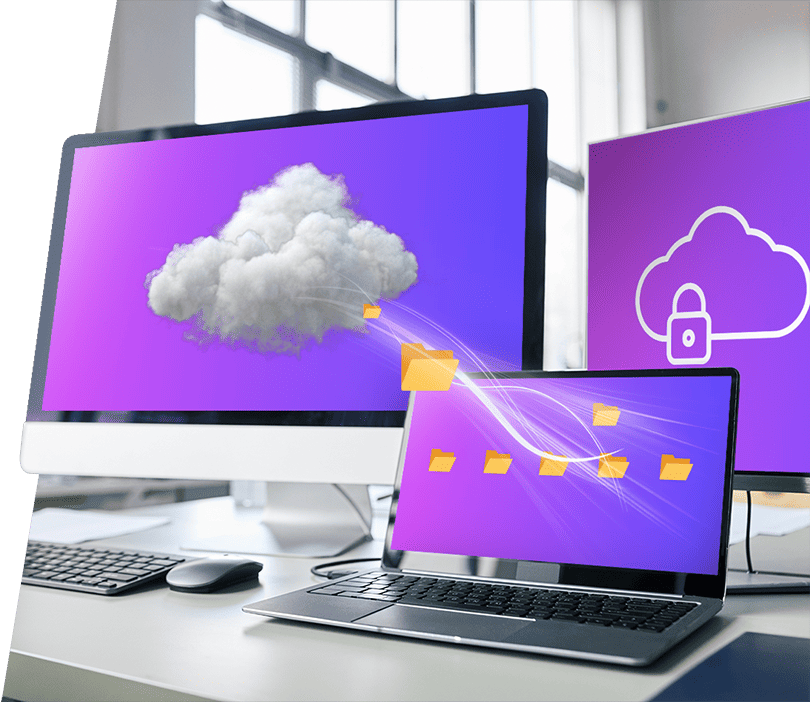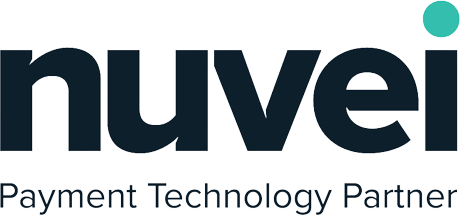Zero Trust Access Management
Authenticate Everyone &
Access Everything — Your Way.

Go Beyond Legacy Solutions
We at GlobalDots hunt for the most cutting edge and relevant technologies out there.
Once tested and found qualified we bring you the most certified innovative products out there for every pressing use case.

Your Benefits
Zero-trust enables a fast, frictionless login and application access. This minimizes distraction and frustration throughout the workday, improving user experience and overall productivity.

 One Portal, All Apps
One Portal, All Apps
Reduce administration overheads and improve productivity by creating one source of truth for user access. We’ll help you publish your enterprise application gateway, making sure all your 3rd party and internal tools are accessible from a single gateway.

Moving away from traditional access models has never been easier. Our solutions architects will help you plan and move all of your access from legacy VPN solutions to SSO, to further simplify your access governance.

 Zero Maintenance
Zero Maintenance
We deploy cloud-native solutions. Infrastructure upgrades are therefore invisible and application updates are rolled out with zero downtime to your access. Let someone else manage the platform so your organisation can focus on its core business, worry free.

3 Simple Ways to Start Implementing Zero Trust Security Today
Taking on a complete Zero Trust security transformation isn’t something that most organizations can do overnight. Many companies require time to fully implement major network and security changes, but there are several simple steps you can take today to get started.

FAQs
-
Can I switch between vendors if I’m not satisfied with one of them?
Yes, one of the main advantages of working with GlobalDots is that we have relationships with multiple vendors per solution category, so our customers can switch between vendors if they would like to. Moreover, we will proactively offer better vendors if we see the value for the customers in terms of features, capabilities or price.
-
How does GlobalDots keep up with the latest technologies in the market?
The people working at GlobalDots live and breath technology. We have relationships with all the cool startups and always seeking new vendors with innovative tech to offer to our customer base. We research and explore emerging technologies on a weekly and daily basis, we filter out the noise and focus only on the promising solutions we vetted that will bring the most value to our customers.
-
What does support look like when working with GlobalDots?
Our solutions architects, engineers and DevOps experts have hands-on experience with the solutions we resell and integrate. Our engineers work with you to resolve any issue to your satisfaction, and never leave you hanging. If needed, we’ll be the ones to engage directly with the vendor, so you don’t have to.
-
What is zero-trust security?
It’s a simple but powerful security principle: never trust, always verify! Unlike traditional security models that rely on perimeter defenses, zero-trust assumes that threats could come from anywhere, both outside and within the network. This approach reflects a fundamental shift in how organizations think about security, moving from a reactive to a proactive stance, ensuring that security is always aligned with the principle of least privilege and continuous verification. As previously mentioned, it’s a principle and not a single product or technology that is particularly effective in protecting against sophisticated attacks by minimizing the implicit trust traditionally granted to users and devices.
-
What are the main concepts of zero trust?
Zero-trusted is a security principle based on:
- Continuous Verification: Every user or device attempting to access resources must continuously prove its legitimacy. This involves device status monitoring, multi-factor authentication (MFA), biometrics, and other robust authentication methods.
- Least Privilege Access: Users and devices are given the minimum level of access necessary to perform their functions. This limits the blast-radius if credentials are compromised.
- Micro-Segmentation: The network is divided into smaller zones, each with its own security controls. This means that even if one part of the network is breached, the attacker cannot easily reach the other parts of the network.
-
What is the relationship between Zero-Trust and VPN?
VPNs (Virtual Private Networks) are designed to create a secure, encrypted tunnel between a user’s device and the corporate network. Once authenticated, a user is granted access to the entire network or a subset of it, based on predefined policies. It’s a perimeter-based security. Indeed, this model assumes that anyone within the VPN tunnel is a trusted entity; users authenticated through the VPN are often trusted implicitly, with little to no granular control once they are inside the network. Zero-Trust security, by contrast, assumes that no user or device, whether inside or outside the network, should be trusted by default. Every access request is continuously verified, and granular controls are applied to ensure users can only access what they are explicitly authorized to. In a fully realized Zero-Trust architecture, traditional VPNs may become less necessary. Zero-Trust Network Access (ZTNA) solutions, which operate on the principles of Zero-Trust, provide secure access to applications without requiring a full network tunnel like a VPN. ZTNA solutions allow users to connect securely to specific applications or resources, with access governed by strict, continuously validated policies.But Zero-Trust and VPN can collaborate too: VPNs can be integrated into a Zero-Trust framework to add an extra layer of security. For example, a Zero-Trust model might enforce multi-factor authentication (MFA) before allowing a user to connect to the VPN. Once connected, Zero-Trust policies would further restrict what resources the user can access, based on their role, device health, etc. and leverage micro-segmentation ensuring that users can only access specific segments of the network relevant to their work.
-
How is Zero-Trust better than VPN?
The Zero-Trust approach outperforms traditional VPNs in addressing modern security challenges. A list of vantage points:
- Granular Access Control: Zero Trust operates on the principle of least privilege, granting users only the minimum necessary access to perform their tasks. Access is restricted to specific applications, data, or services, and is continuously re-evaluated based on user behavior, device health, and other contextual factors.
- Breach Mentality: Zero Trust assumes that breaches can happen at any time, and no user or device should be trusted by default. Even after authentication, Zero Trust continuously verifies every access request, minimizing the impact of a potential breach.
- Improved Security for Remote and Hybrid work: Zero Trust is designed for supporting and empowering decentralized workforce, providing secure access to resources regardless of the user’s location. It enables seamless, secure access to applications and data without the need to route all traffic through a corporate network, reducing latency and improving user experience.
- Reduced Attack Surface: Zero Trust minimizes the attack surface by micro-segmenting the network and controlling access at a granular level. Users can only access specific resources they are explicitly authorized to, making lateral movement within the network far more difficult for attackers.
- Scalability and Cloud readiness: Zero Trust is inherently scalable and well-suited to cloud environments. It provides secure, direct access to cloud applications without the need for complex VPN tunnels, simplifying management and improving performance.
-
How do I start zero trust security?
Implementing Zero Trust security can seem daunting due to its comprehensive and pervasive nature, but it can be effectively managed through a structured, phased approach. Following the standard phases of a project:
- Preparation and Initiation
Familiarize yourself and your team with the fundamental principles of Zero Trust because this foundational understanding will guide your strategy and decision-making. Begin with a comprehensive assessment of your current network architecture, assets, user roles, and access patterns. Identify critical assets, sensitive data, and high-risk areas that need the most protection and determine where your existing security measures fall short of Zero Trust principles (for instance, assess how users access resources and whether there’s excessive implicit trust in your network).Conduct an initial risk assessment to identify potential challenges and constraints, such as legacy systems, budget limitations, or organizational resistance.
- Planning
Break down the project into phases, starting with foundational elements like identity management and network segmentation prioritizing initiatives based on risk and impact. Identify the resources required, including personnel, tools, and budget. Assign roles and responsibilities to team members. In this phase you also will choose the technologies and tools that will support your Zero Trust implementation, such as identity and access management (IAM) systems, micro-segmentation tools, and Zero Trust Network Access (ZTNA) solutions. - Execution
Proceed with these 5 steps:- Apply micro-segmentation to the network, creating smaller, secure zones to limit lateral movement and contain breaches.
- Strengthen identity and access management (IAM) by implementing multi-factor authentication (MFA) and role-based access control (RBAC) to ensure only authorized users have access to critical systems.
- Roll out Zero Trust Network Access (ZTNA) solutions to replace or enhance traditional VPNs.
- Validate all endpoint devices: ensure that all endpoints meet security standards and implement endpoint detection and response (EDR) solutions to monitor and protect devices.
- Apply Zero Trust policies across the organization to ensure that every access request is continuously verified and that least privilege principle (PoLP) is enforced.
- Monitoring
Deploy security information and event management (SIEM) systems and other monitoring tools to continuously observe network traffic, user behaviors, and access patterns. Establish and refine incident response procedures. Ensure that the team is prepared to respond to any security incidents quickly and effectively. Allocate time to measure the effectiveness of the new Zero Trust implementation using key performance indicators (KPIs) such as reduced unauthorized access attempts, faster incident response times, and improved compliance rates. - Closure
Conduct a thorough review of the project, ensuring that all planned phases have been completed and that Zero Trust principles are fully integrated into the organization’s security posture. Compile all project documentation, including policies, procedures, and configuration details. Ensure that this documentation is accessible for future reference and audits. Conduct a post-implementation review to identify lessons learned during the project. Document these insights to inform future security initiatives. And, don’t forget to celebrate the success of the project and the improvements in the organization’s security posture.A partner like Globaldots can help you structure your migration project and support you through all phases
- Preparation and Initiation















